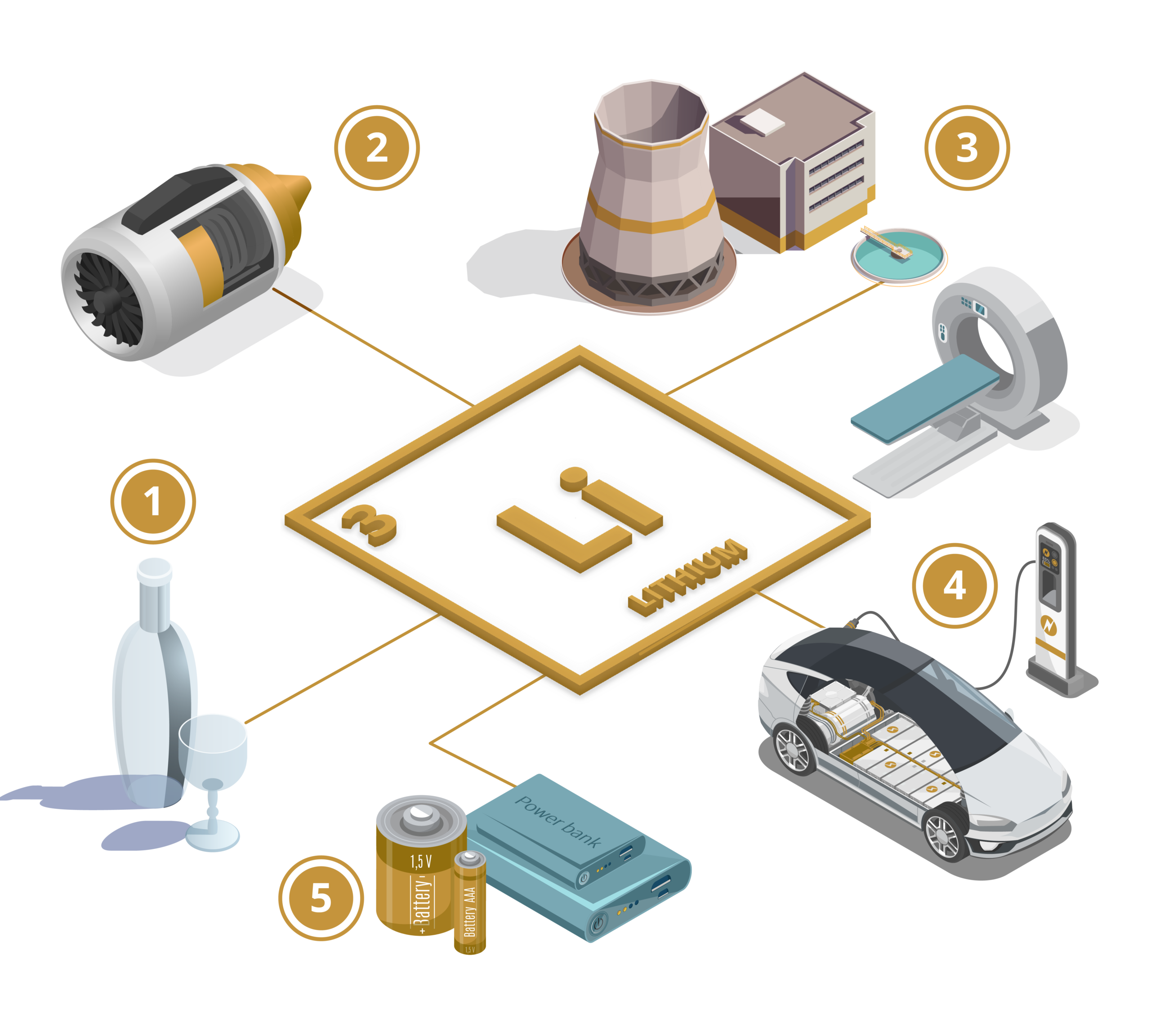Durban, South Africa — Spodumene belongs to the pyroxene group of minerals and has a monoclinic crystal structure. That means its lattice is characterised by unequal axes, making it easy to identify because of its angles.

Lise Oertel
Communications Specialist
Interesting Facts About Spodumene to Know
These crystals can grow to impressive sizes. Some of the world’s largest ones have been found in pegmatite deposits, reaching lengths of several meters. It is commonly found in pegmatites, which contain other industrial minerals and metal ores. These discoveries make it a lucrative option for the mining industry, especially as the need for lithium-based products grows.
What Is Spodumene?
Spodumene is a mineral that serves as an essential source of lithium. Its name comes from the Greek word “spodumenos,” meaning “burnt to ashes.” It was given this name due to the mineral’s tendency to become white or ash-coloured when exposed to air and high temperatures.
Spodumene is an inosilicate with the chemical formula LiAl(SiO3)2 composed of lithium, aluminium, and silicon. It typically occurs in prismatic, flattened crystal forms and may vary in colour, including white, grey, green, pink, or purple. The colour variations occur because of different impurities being present in the mineral.
It has a high specific gravity, typically ranging from 3.0 to 3.2. The high density is due to its lithium content and helps to differentiate it from similar-looking minerals. This feature separates it from other silicate minerals like feldspar and quartz.
Lithium extracted from spodumene is processed to create lithium carbonate or lithium hydroxide, both of which are critical raw components in lithium-ion batteries.
What Is the Economic Importance of Spodumene?
We can see the economic importance of this mineral because of its lithium component. As demand for batteries surges, manufacturers require more of it to meet customers’ needs. Spodumene is a critical feedstock in producing crucial compounds that let us incorporate electric vehicles, renewable energy storage systems, and portable electronic devices into our lives.
The battery industry is a significant lithium consumer. As the world transitions towards cleaner energy and electric mobility, the demand for lithium-ion batteries continues to grow, making spodumene mining and processing economically important.
Spodumene mining and processing operations create jobs and stimulate economic activity in regions where these resources are abundant. A significant workforce is necessary to develop successful extraction opportunities, including transportation and processing activities.
That means the increasing demand for lithium creates a long-term positive outlook for communities with spodumene. Investors see potential in supporting the supply chain to meet the growing demand from various industries.
What Are the Uses of Spodumene?
Spodumene has several important uses, with its primary application being as a source of lithium for various industries. Here are some of the ways we’re working with it today.

1. Ceramics and Glass
Spodumene is sometimes used as a raw material in these industries. It can act as a fluxing agent, reducing the melting point of materials during the firing process. This property is helpful in the production of glass, enamel, and ceramic glazes.
2. High-Temperature Lubricants
Spodumene is useful for this purpose in some specialised applications. Its high melting point and ability to withstand extreme temperatures make it suitable for use in certain industrial processes.
3. Radiation Shielding
Due to its high density and ability to absorb radiation, spodumene can be used as a shielding material in some applications, such as nuclear facilities and medical equipment.
4. Lithium Production
Spodumene-derived lithium plays a critical role in producing high-performance lithium-ion batteries due to its high lithium content and suitability for battery-grade compounds. As the automotive industry transitions towards electric vehicles (EVs) to reduce carbon emissions and dependence on fossil fuels, the demand for lithium-ion batteries has grown significantly. Spodumene is used to enable this mobility change.
5. Energy Storage Systems
Spodumene is an essential lithium source for large-scale energy storage systems. It is valuable for grid-scale applications and stationary requirements, helping balance renewables’ intermittency while making them more reliable and infrastructure-friendly. A small electric car with a 40-kWh battery would potentially need between 24 to 60 kg of lithium. In contrast, a large electric SUV with a 100-kWh battery might require up to 150 kilograms.
Are Spodumene Deposits Limited?
Although spodumene is a relatively common mineral in the planet’s crust, high-quality deposits suitable for commercial use are currently rare.
While spodumene is widespread in various geological settings, the economic viability of mining depends on factors such as lithium concentration, crystal size, purity, and accessibility. That’s why investors are keen to fund opportunities as they arise. There is significant scarcity in the current marketplace.
As lithium becomes more crucial in advancing clean energy and electric transportation, the search for viable spodumene deposits continues.

Related Articles
November 29, 2023
November 17, 2023